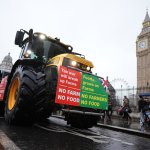Paul McCartney “was always the most surprising Beatle”, said Mark Hudson in The Independent. Despite his reputation as a “cheerful, garrulous mop top”, he was the closest thing the group had to a “Renaissance man”: while his bandmates “retreated to mansions in the stockbroker belt” at the height of their mid-1960s fame, McCartney immersed himself in London’s counterculture, exploring the avant-garde art and literature of the era.
It should come as no surprise, then, that he was, by any standard, “a pretty good photographer” – a fact confirmed by this exhibition of his pictures at the National Portrait Gallery. The show brings together some 250 photographs McCartney took between December 1963 and February 1964, a period when the Beatles were suddenly catapulted to previously unimaginable levels of fame. These mostly unseen images capture both the excitement of the “Beatlemania” phenomenon and, perhaps more interestingly, the tedium of life as a touring musician. They represent a compelling record of “a vital cultural episode that never loses its fascination”.
These mostly black-and-white photos capture McCartney and his bandmates “backstage, in recording studios, on the road and airport Tarmac”, said Gabrielle Schwarz in The Daily Telegraph. We see screaming fans, fellow musicians and, occasionally, a bit of formal experimentation, as witnessed by a series of “arty landscapes”.
Yet while there are some “fantastic individual shots” – notably a picture of George Harrison “wearing two sequin-trimmed hats” – one can’t help but feel that McCartney did well to stick to his day job. Many photos here are less than memorable, while others are technically inept: a pair of self-portraits taken in a hotel mirror, for instance, are “hopelessly out of focus”, while his attempts to emulate the professional photographers he mixed with, using “unusual framing” and “moody lighting”, only help to highlight his deficiencies.
There are a few misfires here, said Laura Cumming in The Observer. Enlargement doesn’t do McCartney’s photos any favours: many have been belatedly developed from old contact sheets, and are frequently “too soft or blurred”. Nevertheless, the show is a gripping “time capsule” from the era when modern celebrity was being born.
Paul’s camera is often on John Lennon, capturing his shifting “psychological nuances” and “changes of appearance” with fascinating precision. You can see the Fab Four fooling around, and producer George Martin “dapper with a cocktail”. Best of all are images from the group’s first American visit, documenting “hysteria at the airport, fans writing their love in the sand beneath Miami hotel windows, drinks by the pool and the industry closing in”. This is a memorable show – “joyful, hopeful, gregarious, comic”.
National Portrait Gallery, London WC2 (npg.org.uk). Until 1 October











